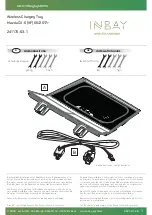
TROUBLESHOOTING 281
Section 3—Primary Electrical System
Test and Procedure
3.1 —Check the ignition switch "on" po-
sition: Connect a jumper wire be-
tween the distributor side of the
coil and ground, and a 12V test
lamp between the switch side of
the coil and ground. Remove the
high tension lead from the coil.
Turn the ignition switch on and
jiggle the key.
Results and Indications
If the lamp lights:
If the lamp flickers when the key is jiggled,
replace the ignition switch:
If the lamp doesn't light, check for loose or
open connections. If none are found, remove
the ignition switch and check for continuity.
If the switch is faulty, replace it:
Proceed
to
3.2
3.3
3.3
Checking the ignition switch "on" position
3.2—Check the ballast resistor or resis-
tance wire for an open circuit,
using an ohmmeter. See Chapter
3 for specific tests.
Replace the resistor or resistance wire if the
resistance is zero.
NOTE:
Some ignition sys-
tems have no ballast resistor.
3.3
CALIBRATED
RESISTANCE
LEAD
Two types of resistors
3.3—On point-type ignition systems, vi-
sually inspect the breaker points for
burning, pitting or excessive wear.
Gray coloring of the point contact
surfaces is normal. Rotate the
crankshaft until the contact heel
rests on a high point of the distrib-
utor cam and adjust the point gap
to specifications. On electronic ig-
nition models, remove the distrib-
utor cap and visually inspect the
armature. Ensure that the arma-
ture pin is in place, and that the
armature is on tight and rotates
when the engine is cranked. Make
sure there are no cracks, chips or
rounded edges on the armature.
If the breaker points are intact, clean the con-
tact surfaces with fine emery cloth, and adjust
the point gap to specifications. If the points
are worn, replace them. On electronic sys-
tems, replace any parts which appear defec-
tive. If condition persists:
3.4
RESISTOR
BLOCK
















































